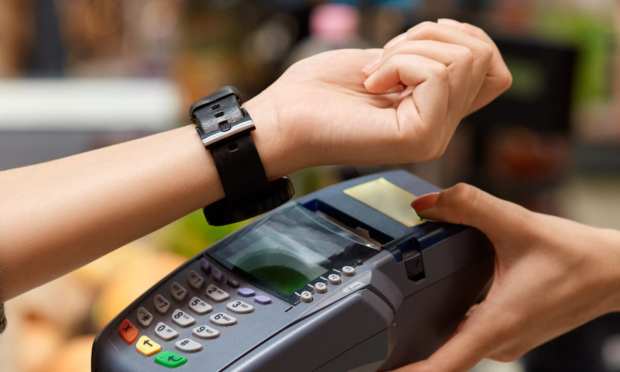
In an age where technology continues to evolve at an exponential pace, the integration of smart devices into consumers’ daily routines has become increasingly prevalent.
From smartphones to smartwatches, these devices have not only transformed communication and access to information but have also revolutionized financial transactions.
The widespread adoption of contactless payments, enabled by near-field communication (NFC) technology, exemplifies this shift. Now, recent developments in wearable technology are further driving the adoption of contactless payments, as tech industry giants actively integrate this functionality into wearable devices.
Telecommunications giant Airtel, in collaboration with lifestyle brand Noise, has recently launched a smartwatch, equipped with contactless payment capabilities, offering users a stylish accessory that doubles as a secure payment tool.
Ganesh Ananthanarayanan, COO at Airtel Payments Bank, emphasized the empowerment of customers through wearable technology integration, enabling greater freedom and flexibility in daily transactions.
“By integrating contactless payment capabilities into wearable technology, we empower customers with greater freedom and flexibility in their daily transactions,” Ananthanarayanan said in a Mar. 19 report by The Economic Times. “This smartwatch is the first wearable device the bank has launched.”
Meanwhile, Samsung is exploring the incorporation of contactless payment features into its upcoming Galaxy Ring — the company’s first ring product, which is due to hit stores this year — potentially expanding the utility of wearable devices beyond health tracking.
“We have a whole … team that is looking at that,” Hon Pak, head of Samsung’s digital health team, said, per a Feb. 26 PYMNTS report. “But I think clearly looking at multiple different use cases for the Ring beyond just health, for sure.”
These advancements come on the heels of Apple’s reported offer to grant competitors and third parties access to the NFC chip on iPhones, potentially resolving a longstanding EU antitrust case. The move could address concerns regarding Apple’s alleged restriction of NFC chip access, which hindered competitors from launching tap-to-pay services on Apple devices.
As the European Commission (EC) awaits feedback on Apple’s proposal, the outcome of the market test could have far-reaching implications for competition in the contactless payment market.
“If the market test indicates that the commitments address the competition concerns, the Commission may adopt a decision making them legally binding on Apple. […] If Apple does not [honor] such commitments, the Commission can impose a fine of up to 10% of the company’s worldwide turnover, without having to prove an infringement of the EU antitrust rules,” the EC wrote in a Jan. 19 press release.
With various stakeholders, including wearable technology players, vying for prominence in this rapidly evolving landscape, the future of contactless payments remains dynamic and full of possibilities. The potential resolution of the EU antitrust case against Apple could pave the way for increased competition and innovation in the contactless payment market, benefiting consumers and driving further innovation in the payments space.